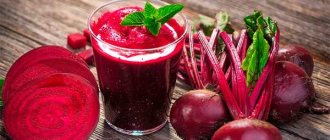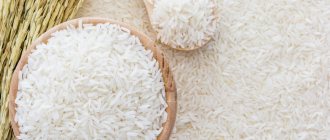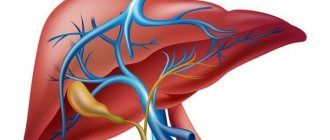In this article we will tell you:
- Composition of chicken liver, vitamins, calorie content
- Useful and medicinal properties of chicken liver
- Chicken liver consumption rate
- Benefits for weight loss
- Rules for selection and storage
- Chicken liver recipes
- Use during pregnancy and breastfeeding
- Harm and contraindications for consuming liver
In almost any national cuisine you can find dishes made from chicken liver. It is valued much lower than meat, but in fact it contains a greater amount of useful substances and is classified as a gourmet and dietary product.
In the article, we will look at the main health benefits of chicken liver, how to choose and deliciously prepare dishes from it, as well as what quantity is optimal to consume to get maximum benefits, and who should limit it in their diet.
Composition of chicken liver, vitamins, calorie content
Chicken liver contains so many vitamins that it is enough to eat just one hundred grams of it to almost completely satisfy the body’s daily need for nutrients.
There is practically no fat in it, and in terms of protein volume it is in no way inferior to chicken breast.
Calorie content of chicken liver
: 139.9 kcal.
Nutritional value of chicken liver
: proteins – 20.4 g, fats – 5.9 g, carbohydrates – 1.4 g.
The product is rich in retinol, important for maintaining visual acuity, ascorbic acid, which has powerful antioxidant properties necessary to preserve youth and energy, nicotinic acid, which regulates oxidation and reduction reactions, normalizing the functioning of the heart and blood vessels.
The liver contains large quantities of B vitamins, which are involved in the synthesis of blood cells and have a beneficial effect on the functioning of the reproductive system.
It also contains choline, a nutritious vitamin-like compound that helps process lipids, controls normal cholesterol levels in the bloodstream, blocks the formation of plaques on the walls of blood vessels, and protects against cirrhosis.
What vitamins are included in the product in the highest concentration?
- retinol (A) – 15 mg;
- ascorbic acid © – 28 mg;
- thiamine (B 1) – 0.6 mg;
- riboflavin (B 2) – 2 mg;
- nicotinic acid (B 3) – 12 mg;
- choline (B 4) – 195 mg;
- pyridoxine (B 6) – 1 mg;
- folic acid (B 9) – 0.4 mg;
- cobalamin (B 12) – 0.02 mg;
- beta-carotene – 0.1 mg.
Chicken liver is rich in minerals.
It contains calcium, which is necessary for the proper development and strengthening of bone tissue and tooth enamel, potassium and magnesium, which have a beneficial effect on the functioning of the heart, phosphorus, which supports the normal functioning of the immune system and improves mental performance.
The product also contains large quantities of microelements that are important for the full functioning of the human body: iron, which is involved in the synthesis of hemoglobin, sodium, which regulates water-salt metabolism, copper, which controls hematopoiesis, fluorine, which prevents the destruction of bones and teeth.
In 100 grams of liver, minerals are in the following concentrations:
:
- potassium – 30 mg;
- sodium – 26 mg;
- chlorine – 20 mg;
- phosphorus – 17 mg;
- calcium – 13 mg;
- magnesium – 4 mg;
- sulfur – 2 mg;
- iron – 1 mg;
- fluorine – 0.1 mg;
- copper – 0.05 mg;
- manganese – 0.03 mg;
- iodine – 0.01 mg.
Chicken liver is very useful for people who suffer from atherosclerosis and diabetes. It is also recommended to be used for chronic fatigue, loss of strength, nervous and physical fatigue, as well as during periods of recovery after undergoing surgery or serious illnesses.
Treatment and prevention of vascular diseases
Chicken liver is rich in vitamins, macro- and microelements. It is a low-calorie product, but most people are interested in whether there is cholesterol in chicken liver.
Chicken liver is a wonderful product, adored by a large number of meat gourmets. You can make excellent culinary masterpieces from it, which cook quickly enough and turn out unusually tender, healthy and aromatic. For some people, the taste of offal is specific, and not everyone likes it.
The calorie content of chicken liver is only 137.7 kilocalories per 100 grams of product, which especially attracts people who carefully monitor their weight, as well as those who eat the right dietary foods.
Useful and medicinal properties of chicken liver
Culinary experts classify chicken liver as a delicacy, and nutritionists recommend using it for health and medicinal purposes.
What are its main advantages?
- The high iron content in chicken liver helps increase hemoglobin in the blood, and heparin maintains its ability to clot normally, which means it is ideal for the prevention of myocardial infarction, stroke and atherosclerosis.
- Memory improves and brain activity is stimulated due to the choline contained in the liver, eliminating the risks of dementia and Alzheimer's disease.
- The benefits of chicken liver are its selenium content. It maintains the necessary amount of iodine in the body, which is useful for the thyroid gland, as well as for cleansing the blood.
- Thiamine is a strong antioxidant that protects the body from the harmful effects of heavy metals in the environment.
- The condition of teeth and hair improves, and vision is strengthened due to ascorbic acid, which is part of the liver, and methionine prevents the appearance of malignant tumors.
- The amino acid tryptophan is responsible for deep, restful sleep and inhibition processes in the brain.
- Those who want to lose extra pounds include liver in their diet because of its low calorie content.
- Ascorbic acid increases resistance to external influences and helps the body fight colds.
- Due to the fact that the product reduces the production of cortisol, its use helps eliminate nervousness, insomnia, and physical stress.
- strengthens teeth and bone skeleton, is a preventive measure against the occurrence of osteoporosis and fractures;
- renews epidermal cells, prevents the appearance of wrinkles;
- strengthens hair follicles;
- The magnesium and phosphorus contained in it promote the reproduction of red blood cells and activate the defenses.
We recommend
“Intestinal motility: nutritional rules for improvement, menu for the week” Read more
Doctors recommend regular consumption of chicken liver for people with health problems such as
:
- overwork and fatigue;
- diabetes;
- anemia;
- lung diseases;
- nervous disorders;
- decreased immunity;
- metabolic disease.
But the most useful property of chicken liver is considered to be its help in restoring the patient’s body after a large loss of blood, which occurred, for example, during a major operation.
Thanks to the iron, retinol and cobalamin it contains, you can increase hemoglobin and improve blood clotting. For this reason, the product is often recommended for use in cases of anemia, during pregnancy, and after surgical interventions.
Chicken liver benefits men:
- Helps increase testosterone levels, thereby increasing the strength and endurance of the male body;
- Regulates the functioning of the adrenal glands, which has a positive effect on the production of hormones necessary to normalize the reproductive function of men.
Chicken liver benefits women:
Folic acid (vitamin B9) in its composition is extremely necessary for women during pregnancy planning and while bearing a child. And the product in question also contains ascorbic acid, riboflavin, carotene, niacin, and thiamine - all these vitamins are necessary for the normal functioning of the body.
Thanks to vitamin A, vision, skin and hair condition improves, and the immune system is strengthened.
Beneficial properties for children:
- the protein content is comparable to chicken breast - promotes intensive muscle development;
- the liver contains folic acid, which is crucial for the hematopoietic system and helps improve immunity;
- rich in iron, in combination with vitamin B9 it helps cope with anemia;
- useful for the gastrointestinal tract - since this product is soft and delicate, it has a gentle effect on the organs of the digestive system;
- thanks to selenium and iodine, it improves the condition of the thyroid gland;
- contains vitamin C, which provides antioxidant effects.
At what age can children be given chicken liver?
The first time you can give your baby liver is at the age of 8–9 months, after meat has been introduced into the diet. Before giving chicken liver to your child, it is recommended to offer beef or veal liver.
It is recommended to start with a one-component puree; industrially produced dishes are best perceived - due to a special grinding technology (homogenization). Offer it to your baby in the morning - just a little, 1/2 teaspoon is enough, and make sure that during the day no rash or other manifestations of allergies appear on the baby’s body, and that the stool is normal.
If the tasting went without problems, the next day the portion can be doubled. This way you will gradually increase it to 50–60 g (the norm is calculated for 12 months). Later, in addition to the liver, you can add vegetables to the puree, for example, carrots or onions.
We recommend
“Foods good for the kidneys: TOP-25 for good health” Read more
If you offer your baby ready-made liver puree, always give preference to small packaging, since the maximum shelf life of an opened product is only 24 hours. Pay attention to the ingredients: high-quality baby food should not contain modified starch, rice flour, etc.
Recommendations for preparing chicken liver for a child
:
- at least until the age of 3, do not offer your baby fried liver - this can cause excess body weight and harm his health;
- rinse the product thoroughly under running water, carefully cut out all the fat - it is of no use;
- do not exceed the cooking time of the liver - no more than 15 minutes, otherwise it will become tough.
It is better to combine it with cereals or vegetables. It is better to stew or bake it no earlier than the baby is one year old, and it is necessary to focus on the number of teeth and chewing skills.
About the harm to the liver
Many people, speaking about the dangers of products, argue that chickens are often “pumped” with hormones so that they grow quickly and gain weight. But don't panic. Hormones, like anabolic steroids, are quite expensive today. Using them as bird food is an expensive proposition.
It is not chemical experiments that you should be afraid of, but bacteria that may be in chicken meat. For example, the bacterium salmonella can cause a disease called salmonellosis.
If the human body encounters a bacterium for the first time, it may react to it in a special way, resulting in signs of poisoning. Severe intoxication is rare. Patients mainly complain of abdominal pain, diarrhea and nausea. When using absorbent drugs, symptoms quickly disappear.
If the body encounters the bacterium again, signs of severe intoxication may occur. Salmonellosis is a dangerous disease that leads to muscle paralysis and can cause death.
Attention! Usually, offal products, like chicken, are tested for the presence of salmonella, but if a low-quality product is found, health problems may arise.
Another danger is toxoplasmosis, a parasitic disease. To avoid infection, it is necessary to heat treat meat and liver.
Toxoplasmosis is especially dangerous for pregnant women, as it can lead to fetal death. This does not mean that you need to stop eating offal, you just need to cook it correctly and carefully select the liver.
Culinary experts advise carefully inspecting the liver and chicken before purchasing and discarding the product if the quality is in doubt. And before stewing or frying the offal, you need to rinse it under a stream of water.
Not only water kills bacteria, but also cold, for this reason you can freeze your liver - this will help protect yourself from possible risks.
Chicken liver consumption rate
Chicken liver can be consumed even daily, but it is important that the amount of liver is reasonable.
To obtain benefits and to avoid harm, it is better to limit the consumption of chicken liver to 300 grams per day.
The optimal time for consumption is lunch.
If you have high cholesterol, it is better to consume chicken liver no more than 2 times a week. 100 g of product contains 280 mg of this substance, which is a lot. Abuse increases the risk of cardiovascular pathologies, such as atherosclerosis.
Liver with atherosclerosis
Having high levels of bad cholesterol requires a person to follow a certain diet. As a rule, it does not include by-products. In addition, restrictions are imposed on products of animal origin, including meat and chicken.
Despite the fact that in our body cholesterol is synthesized by liver cells, a person receives some of this hormone from food. Given this fact, it is worth carefully monitoring what is included in the patient’s diet. If cholesterol levels are constantly rising, then eating offal is not recommended.
If the indicators are elevated, but within the normal range, then you should steam the liver and simmer it without adding butter or sour cream.
From this we can conclude that chicken, pork and beef liver, like other offal, is not recommended for consumption in case of atherosclerosis. It is better to give preference to fish and seafood; they can be eaten in any quantity, with the exception of caviar.
The benefits and harms of the liver are described in the video in this article.
Benefits for weight loss
Many nutritionists include liver in diets for weight loss.
Why? It is low in calories and has the ability to suppress appetite.
If you periodically consume it with vegetable side dishes, you can achieve noticeable weight loss.
Due to the protein, the product is useful for athletes who need an increased amount of protein to build muscle mass.
Thus, nutritionists advise including chicken liver in the diet when losing weight for the following reasons
:
- The product saturates cells with useful substances, improves the functioning of many organs, strengthens the immune system due to the fact that it contains B vitamins, ascorbic acid, tocopherol, calcium, magnesium, sodium, potassium
- Improves the functionality of the digestive organs, accelerates metabolic processes, and enhances intestinal motility.
- Contains a lot of protein. The ratio of BJU in the liver: proteins – 58%, fat – 37%, carbohydrates – 2%. It preserves muscles from destruction and accelerates their growth during loss of adipose tissue.
- Has low energy value. 100 g of product contains no more than 140 kcal.
Rules for selection and storage
Chicken liver is sold chilled and frozen. The best option would be to purchase a refrigerated product. And when purchasing, you should pay attention to the following points
:
- chicken liver has a smooth surface without any inclusions;
- the color of a quality product is brown with a burgundy tint;
- It is not allowed to purchase chicken liver with a loose consistency - this means not only that the product is “old”, but also that it is not stored properly;
- if the product in question is orange, this means that the chicken liver has been frozen/thawed several times;
- the color of the liver is greenish - when processing chicken liver, the gall bladder burst, and the product will be very bitter.
When using chicken liver, one should take into account the extremely short shelf life of this offal in fresh form: at room temperature - no more than 12 hours, in the refrigerator - 2-3 days.
Targeted nutrition tips
that will increase your energy level by 10 out of 10
From TOP nutritionists of the MIIN
Get tips
Since when choosing a liver the main indicator of quality is color, it is not recommended to buy frozen. Under a layer of ice, it may be impossible to see what color the liver is. But if you still decide to buy frozen, you need to remember
:
- The cut of a high-quality frozen liver is smooth, with a thin layer of ice, which should melt within 15 seconds when pressed with a finger.
- A sign of re-freezing is pink ice crystals on the liver. Don't buy this one.
- Pieces of ice in the packaging indicate that the manufacturer pumped the product with water before freezing to increase its weight. Refuse to purchase.
And for long-term storage, freezing is quite suitable. In this case, defrosting chicken liver should be done gradually, without exposing it to aggressive heat.
If you take fresh pieces and freeze them, the shelf life can be about six months. Thawed ones are recommended to be used within the next 24 hours.
Chicken liver can be an excellent addition to your usual diet and will enrich your dietary table. The main thing is to learn how to choose the right product and prepare it correctly.
For cooking, it is recommended to give preference to chilled liver, avoiding freezing it.
When choosing a product, you need to pay attention to its appearance, smell and color. Fresh chicken liver has a characteristic brown color, a faint smell of raw meat, and does not contain a large amount of separated moisture.
Before preparing any dish with the addition of chicken liver, the offal must be soaked for 30–40 minutes in drinking water or milk.
The best way is to cook chicken liver. This is done quickly - at a low boil, it will take 15 minutes to cook. You should not add bouillon cubes or any seasoning - give preference to vegetables and herbs.
In order to preserve the juiciness of the chicken liver, it should be fried over high heat for several minutes. But choose oils that are suitable for frying, such as coconut, avocado, olive and grapeseed oil.
To make it tender, you need to salt it at the very end of cooking.
Thus, in order for your dishes to be tasty and healthy, always buy only fresh and environmentally friendly chicken liver. The duration of heat treatment of chicken liver should not exceed 20 minutes, since after this time, the product becomes dry and completely loses its taste. In addition, adding salt during the preparation of chicken liver is necessary after heat treatment.
Chicken liver recipes
Chicken liver dishes are considered dietary food, as they are easily digestible and contain few calories.
Chicken pate
Ingredients
:
- 250 g chicken liver
- 1 medium carrot
- 1 onion
- 100 g butter
- 50 g vegetable oil
- Salt and ground black pepper to taste
Cooking
: Chicken liver must be washed and soaked in water for half an hour. The onions are peeled, washed under running water and cut into small cubes. The carrots also need to be peeled, washed and grated on a medium grater. Next, in a heated frying pan, pre-greased with vegetable oil, sauté the onions and carrots for 10 minutes.
Add soaked chicken liver to a frying pan with onions and carrots, fry all ingredients over medium heat for 5 minutes. All fried products are passed through a meat grinder or crushed in a blender, mixed with butter, ground black pepper and salt are added, and then mixed again.
The finished pate is placed in the refrigerator for half an hour, after which it is served.
Chicken liver soup
Ingredients
:
- 400–600 grams of chicken liver
- 4–5 potatoes
- one medium sized carrot
- one onion
- bell pepper – 1
- 200–300 grams of boiled or canned beans
- tablespoon tomato paste
- bay leaf 2–3 pieces
- herbs and salt to taste
Cooking process
:
- Rinse the liver and boil in a saucepan with a capacity of three to four liters. Then put it on a plate.
- Place chopped potatoes into the broth and cook until half cooked. Finely chop the onion, carrots and peppers and sauté in oil in a frying pan for about ten minutes. Add tomato paste to taste.
- Add fried beans to the broth and cook for seven to ten minutes.
- Add the prepared liver, bay leaf and chopped herbs 1-2 minutes before the end of cooking the soup.
Liver stewed in sour cream and onions
This dish cooks very quickly - fifteen minutes. Ingredients
:
- 1 large onion
- chicken liver - five hundred grams
- half a glass of sour cream
- salt, ground black pepper - to taste
- vegetable oil
We recommend
“How to reduce carbohydrates while losing weight: 8 steps, list of allowed and prohibited foods” Read more
Preparation
:
- Cut the onion into half rings. Then fry it in vegetable oil until golden brown.
- Wash the liver and cut into strips. Place it in a frying pan with onions and fry for seven to ten minutes.
- Add salt, pepper, sour cream and a little water. Simmer for another 2-3 minutes.
- At the end of cooking, add greens.
Chicken liver pancakes
Main Products
:
- five hundred grams of chicken liver
- 2–3 eggs
- rice flour - half a cup
- a pinch of soda and salt
- black pepper to taste
How to cook
:
- Grind the raw liver in a meat grinder.
- Break the eggs into the minced meat, add flour, soda, salt and pepper. Mix everything well.
- Pancakes are fried in vegetable oil. Served with sour cream.
Pots with liver
The ingredients are for a couple of medium pots. You can add a bay leaf for flavor, just be sure to discard it later.
Ingredients
:
- Chicken liver – 500 g
- Sour cream – 200 gr
- Hard cheese – 150 gr
- Potatoes – 600 gr
- Carrots – 200 grams
- Onion – 150 gr
- Salt, seasonings - to taste
Wash the vegetables and peel the skins. Cut the onion into rings, carrots into slices. Fry them over high heat for 5 minutes. At this time, cut the potatoes into strips and add to the pan. Simmer for another 10 minutes.
We recommend
“Diet for the heart: nutritional features and review of diets for cardiovascular diseases” Read more
Place half of the vegetable mixture into the pots. Wash the liver, remove films, cut into small pieces and add to pots. Salt, pepper and add the other half of the vegetables. Grate the cheese and sprinkle with the liver-vegetable mixture.
Bake in the oven at 180 degrees for 40-45 minutes.
There are a lot of recipes for various liver dishes, but losing weight is only possible if you choose dietary options. Salads, soups, appetizers, stews are best suited. Here are simple recipes for delicious and healthy dishes.
Pate with prunes
Stew one chopped onion and grated carrots. Add boiled liver (500 g) and several prunes, cut into strips. Simmer everything for a couple of minutes. Then add half a glass of walnuts, a little butter, salt and spices to the mixture. Beat everything with a blender.
Chicken liver appetizer
Cut the eggplants into slices, sprinkle with garlic and bake in the oven. Grind 500 g of chicken liver in a blender and prepare small pancakes. Grind the eggplants, bell peppers, garlic, and a little coriander in a blender. Grease one pancake with the resulting vegetable caviar and cover with another pancake. You can eat it like this or put a slice of cheese on top and bake it in the oven.
Chicken liver with vegetables
Chop two onions and simmer for a couple of minutes, add 300 g of chicken liver, simmer for five minutes. Add two grated carrots, two sweet peppers, simmer until tender. When serving, sprinkle with chopped herbs.
Chicken liver salad
Cut the leek into slices, chop 300 g of Chinese cabbage, cut the red bell pepper into cubes. Boil 200 g of liver and finely chop. Mix everything, season with soy sauce, sprinkle with parsley or dill.
Chicken liver stew
Boil 100 g of green beans. Stew 100 g of finely chopped liver, add a red onion, cut into rings, one zucchini and two tomatoes. Simmer for ten minutes, add green beans and cook for another 5-7 minutes.
Stuffed tomatoes with chicken liver
Wash five tomatoes and cut off the top. Scoop out the middle with a spoon. Grate the cheese on a fine grater, chop the garlic and add the tomato pulp to the mixture. Stew the chicken liver and chop it very finely. Mix the cheese mass and liver, place in tomato cups, and cover with lids.
We recommend
“Causes of malnutrition and gluttony. List of the most harmful foods and associated health problems" Read more
Chicken liver muffins
This is an original version of dietary chicken liver with vegetables.
Energy value
– 159 kcal/100 g, B – 10.7 g, F – 8.5 g, U – 9.8 g.
Step by step recipe
:
- Using a blender, grind 200 g of chopped liver, an egg, 2 tbsp. l. sour cream, 2 tbsp. l. whole grain flour. Add salt.
- Boil 2 potatoes, chop with a blender, mix with 20 g of butter or olive oil.
- Boil the carrots and chop.
- Chop onion, 1 paprika.
- Mix all the vegetables.
- Grind 50 g of cheese (fat content - up to 17%).
- Place 2 tbsp in silicone molds. l. liver puree, then – 1 tbsp. l. vegetable mixture, then again liver and vegetables.
- Sprinkle each liver muffin with cheese and bake for 20 minutes at 180 degrees.
Steamed cutlets are a great alternative to fried pancakes.
Even the most picky children will enjoy trying these cutlets. They look appetizing, juicy, and have a pleasant structure.
100 g contains approximately 167 kcal, B - 14 g, F - 4 g, U - 8 g.
Step by step recipe
:
- Pass 300 g of chicken liver through a meat grinder. Chop the onions and carrots in the same way.
- Salt the minced meat, add the egg, mix.
- Form cutlets, place them on a steaming container, and simmer for about 30 minutes.
- Grind the paprika.
- Wash and dry the arugula.
- Place the finished cutlets on a plate, garnish with pieces of sweet pepper and arugula.
Chicken liver recipes for children
Liver soufflé in a slow cooker
Ingredients
: liver – 100 g, a small slice of bread, 1 chicken egg (preferably homemade), 50 ml of milk, salt to taste.
We recommend
“Enzyme deficiency: symptoms and treatment” Read more
Preparation
:
- Cut the liver into small pieces, place in a blender container, pour in the milk and bread pulp.
- Carefully separate the yolk and add it to the rest of the ingredients (set aside the white for now).
- Using a blender, beat all the products until a homogeneous mass is obtained - it will turn out to be quite liquid, which is exactly how it should be.
- Beat the egg white in a separate bowl - you should get a stable foam, which must be added to the liver mass.
- Pour 1 liter of water into the multicooker bowl, place a wire rack on top, and place the molds on it (if they are steel, grease them with butter; silicone ones do not need this procedure).
- Pour the liver mass into the molds, then set the multicooker mode to “steam”.
- After cooking, be sure to release the steam before opening the lid.
- The soufflé is served warm, but not hot.
If desired, you can garnish with dill or parsley.
The dish goes well with mashed potatoes, porridge and pasta.
Does chicken have cholesterol and how much is there in chicken breast?
Have you been struggling with CHOLESTEROL for many years without success?
Head of the Institute: “You will be amazed at how easy it is to lower your cholesterol just by taking it every day.
Cholesterol in chicken is contained in small quantities - on average only 80 mg per 100 g of meat. Since lipid metabolism disorders are one of the most common problems today, adjusting diet and body weight plays an important role in our lives.
What cholesterol is responsible for in the human body, why an excess of this substance is harmful, and how to cook tasty and healthy chicken - this information is presented in the article.
Our readers successfully use Aterol to lower cholesterol. Seeing how popular this product is, we decided to bring it to your attention. Read more here...
"Good" and "bad" cholesterol
Cholesterol (cholesterol) is a fat-like substance that belongs to the class of lipophilic alcohols. Modern science knows about the properties of cholesterol thanks to the work of P. de la Salle, A. Fourcroix, M. Chevreul and M. Berthelot.
It is the human liver that produces up to 80% of this substance, and only 20% enters the body with food. Normally, cholesterol levels should vary from 3.3 to 5.2 mmol/l. When the concentration of a substance goes beyond normal limits, a failure in lipid metabolism occurs.
Lipoproteins, a class of complex proteins, are important in transporting cholesterol. They may contain fatty acids, phospholipids, neutral fats and cholesterol.
Low-density lipoproteins (LDL) are poorly soluble substances in the blood that produce sediment of cholesterol crystals. Research has established a direct link between the amount of LDL and the formation of cholesterol plaques. For this reason, they are also called “bad” cholesterol.
High-density lipoproteins (HDL) are highly soluble substances that are not prone to sediment formation. They are not atherogenic and protect the arteries from the formation of atherosclerotic plaques and growths.
The normal LDL concentration should not be more than 2.586 mmol/l. With elevated cholesterol levels, the risk of stroke or heart attack, as well as other vascular diseases, increases.
An increased concentration of LDL can be associated with bad habits, excess weight, insufficient physical activity, poor diet, stagnation of bile in the liver, as well as a malfunction of the endocrine system.
Factors such as playing sports, giving up alcohol and smoking, and eating foods rich in fiber, vitamins, fatty acids, micro- and macroelements reduce LDL levels.
The importance of cholesterol for the body
The complex compound is found in almost all living organisms inhabiting the planet.
The only exceptions are prokaryotes, or nuclear-free fungi and plants.
Cholesterol is a substance that performs many vital functions in the human body.
Without this connection, the following processes are impossible:
- Formation of the plasma membrane. Cholesterol is part of the membrane, being a biolayer modifier. It increases the packing density of phospholipid molecules.
- Participation in the functioning of the nervous system. The compound is part of the sheath of nerve fibers, designed to protect them from damage. Thus, cholesterol improves the conduction of nerve impulses.
- Discovery of the chain of biosynthesis of hormones and the formation of vitamins. This substance promotes the production of sex and steroid hormones. Cholesterol is the basis for the production of vitamins D and bile acids.
- Boosting immunity and removing toxins. This function is associated with the protection of red blood cells from the harmful effects of hemolytic poisons.
- Prevention of tumor formation. A normal level of HDL prevents the degeneration of benign into malignant formations.
Despite performing important functions of the body, excess cholesterol, namely LDL, leads to many serious pathologies. The most common is atherosclerosis, a condition in which cholesterol growths and plaques settle on the walls of blood vessels. As a result, the lumen of the vessels narrows, their elasticity and elasticity deteriorate, which negatively affects blood circulation.
Substance content in lean meats
When preventing and treating atherosclerosis, you need to include in your diet only lean varieties of meat such as chicken, rabbit and turkey.
It is almost impossible to do without meat, because this product is the leader in protein concentration. It contains amino acids, especially necessary for children, pregnant and nursing mothers. Various dietary and fatty meats include many microelements - iron, magnesium, calcium, zinc, etc.
Chicken is an easily digestible product with good taste, low fat content and a low glycemic index. It includes phosphorus and iron, carotene, vitamins D and E. Table No. 10c and other diets exclude the consumption of chicken skin, so it is separated from the meat before cooking. The skin and entrails are of no benefit to the body.
Rabbit is the most dietary product. The ratio of fats, calories and proteins in this meat is close to ideal. Consumption of rabbit meat accelerates metabolism, therefore, in case of atherosclerosis, it helps to normalize lipid metabolism.
Turkey also contains a minimal amount of fat. In terms of phosphorus concentration, it is not inferior to fish. By eating a serving of turkey, the human body is provided with half the daily requirement of vitamins B and P.
Below is a table containing the calorie content and cholesterol levels of lean meats.
| Type of meat | Proteins per 100 g | Fats per 100 g | Carbohydrates per 100 g | Kcal per 100 g | Cholesterol, mg per 100 g |
| Turkey | 21 | 12 | 1 | 198 | 40 |
| Chicken | 20 | 9 | 1 | 164 | 79 |
| Rabbit | 21 | 13 | 200 | 90 |
Despite the fact that chicken contains little cholesterol, its level in egg yolk is 400-500 mg/100 g. Therefore, in case of atherosclerosis, the consumption of chicken eggs should be minimized.
The chicken heart contains 170 mg/100 g, and the liver - 492 mg/100 g. The question remains relevant: how much cholesterol is in chicken breast, because you can prepare various gravies from it, suitable for any side dish. The cholesterol concentration in chicken breast is 35 mg/100 g. Its content in young chicken is even lower - only 20 mg/100 g.
What is better to avoid if you have atherosclerosis is fatty meats. These include pork, lard and lamb.
Despite the fact that pork contains a small amount of cholesterol - 80 mg/100 g, excess fat in the body leads to the development of cardiovascular diseases.
How to cook chicken properly?
To stabilize blood cholesterol levels and prevent the development of atherosclerosis, you must adhere to healthy eating rules. Fatty, fried, smoked, pickled and salty foods should be excluded from the diet. You will also have to give up fats and viscera (liver, heart, etc.).
There are several rules for preparing dietary meat in order to provide the greatest benefit to damaged blood vessels and saturate the body with biologically active components:
- Chicken and other types of meat are prepared boiled, baked or steamed. Thus, all vitamins and other substances are preserved.
- When preparing meat dishes, you need to add a minimum amount of salt. The daily norm of its consumption is 5 g. Excess salts in the body leads to vasodilation and an increase in blood pressure.
- Chicken meat should be cooked without skin. Brisket is best because... it contains a minimum of cholesterol.
Consumption of chicken liver during pregnancy and breastfeeding
During the period of preparation for pregnancy for the female body, the benefits of chicken liver are as follows:
:
- contains protein similar in composition to chicken fillet;
- rich in folic acid, which affects the circulatory and immune systems of the pregnant woman, and the intrauterine development of the fetus;
- A 100-gram portion satisfies the daily dose of iron, an integral part of hemoglobin;
- has a positive effect on gastrointestinal activity;
- contains natural acids and vitamin A, especially valuable for pregnant women.
Chicken liver is also recommended during pregnancy because, compared to other types, it is lower in calories, contains less cholesterol and is easily digestible.
Just choose the product carefully, paying attention to the surface, consistency, color, presence of inclusions, foreign odors and impurities.
Despite all the beneficial properties of chicken liver, some experts do not recommend its use. This is due to the function of the liver as a physiological “filter”. After all, it is the liver that cleanses the blood of humans and animals from everything unnecessary.
We recommend
“Vitamins for ligaments: signs of deficiency and daily intake” Read more
It is especially risky to eat chicken liver during pregnancy if the bird was raised using the so-called intensive method, using feeds and chemical additives that are questionable for health. Such fattening also involves the preventive use of antibiotics, which also accumulate in livestock products.
But there are also arguments in favor of the liver
:
- along with bile, everything harmful is removed;
- the human liver is also a powerful filter, capable of getting rid of excess and neutralizing harmful things;
- You can use an environmentally friendly natural product grown at home.
If there is any doubt about the quality of the liver, it should be excluded from the diet of the expectant mother.
Most women are afraid to eat chicken liver while breastfeeding because they do not know how the baby will react.
In fact, if the newborn baby is not particularly prone to allergies, the nursing mother does not need to adhere to a strict diet.
The composition of a woman’s breast milk depends entirely on what she eats, so it is correct to include in the diet a variety of foods enriched with vitamins and microelements beneficial for the baby.
One of these components is the liver. Chicken liver contains valuable vitamins for a healthy pregnancy, such as vitamins B, K, D, E and A. It also contains large amounts of microelements such as magnesium, phosphorus, zinc, iodine, iron, potassium, sodium and calcium.
The main advantage for women during lactation is a large amount of folic acid.
This offal has a fairly low calorie content, so all women who have gained a few extra pounds during pregnancy can safely consume it.
In addition, chicken liver improves the functioning of the digestive system and helps improve bowel movements.
Chicken liver additionally contains choline, a substance that helps stimulate brain activity and improves memory, attention and concentration. That is why this by-product must be consumed regularly, at least 2 times a week, including during breastfeeding.
Thus, regular consumption of chicken liver during pregnancy is the key to the well-being and health of the mother, proper development and timely birth of the baby.
We recommend
“Sources of carbohydrates: excess and deficiency in food” Read more
The only “but” that should alert a nursing mother is that chicken liver contains a fairly large amount of cholesterol.
You should also avoid consuming large portions, since, as was written above, the liver is a valuable source of vitamins, including vitamin A (retinol).
Based on reference data, 100 g of chicken liver should contain about 12 mg. According to some examinations, the tested samples of retinol contained much more - from 41 to 59 mg!
According to experts, this may be due to the feeding habits of broiler chickens. Considering that vitamin A accumulates in the body, you should not abuse this product.
Vitamin A is one of the main micronutrients that performs a number of functions
:
- Prevention of anemia during pregnancy.
- Maintaining metabolism during pregnancy.
- Growth and development of tissues during pregnancy, as well as fetal development (skin, teeth, bones, vision).
The principle “the more the better” does not work here.
Excess vitamin A is dangerous
: intoxication is manifested by drowsiness, headaches, inflammation of the cornea and pain in the legs, causes disturbances in the development of the fetus, which can result in the occurrence of various pathologies in the child.
There are 2 forms of vitamin A
:
Retinol
- the active form of vitamin A, which is present in large quantities in the liver (fish and animals). Overdose and its consequences are associated with this form of vitamin A.
Beta carotene
- provitamin A, which we get from yellow and orange vegetables and fruits, as well as greens. When it enters the body, it first goes through the stage of processing into a vitamin and only after that is absorbed.
Beta-carotene differs from retinol in that an overdose of beta-carotene causes yellowing of the skin, but is not dangerous to the body.
It must be remembered that even when consuming vitamin A in a relatively low dose, but for a long time, you can get an overdose of vitamin A.
This is due to the fact that the body consumes vitamin A slowly, and excess accumulates in the liver and adipose tissue. Retinol crosses the placenta. An overdose of retinol leads to improper formation of the embryo, that is, retinol has a teratogenic effect.
Simply put, if you eat chicken liver every day and your prenatal vitamin also contains retinol, you will be getting too much vitamin A and risk harming your baby.
We recommend
“Proper nutrition for health and a slim figure: menu for the week” Read more
Therefore, it is safer to eat foods containing beta-carotene - asparagus, carrots, celery, broccoli, spinach, pumpkin, zucchini, tomato, sweet pepper, grapes, cranberries, black currants, apples, apricots, bananas, avocados, grapefruit, mango, kiwi) or complexes containing beta-carotene.
For healthy people, consuming this offal is completely harmless, but if a woman initially has elevated levels of bad cholesterol and normal levels of vitamin A, frequent consumption of liver dishes can lead to the development of complications.
Contraindications
The by-product has a lot of beneficial properties, but its use is strictly contraindicated in the following cases:
- stomach ulcer, duodenal ulcer;
- old age, children under 3 years old;
- high hemoglobin level;
- the last stage of vascular atherosclerosis.
The harm of by-products is often explained by their ability to accumulate harmful compounds and substances. This is unsafe if the bird was fed hormones or food additives based on them.
However, stories about mass feeding of birds with hormonal drugs are exaggerated. Firstly, it is expensive and unprofitable. Secondly, most of the substances are destroyed during soaking and further heat treatment of the offal.
If toxins do enter the body, the human liver will remove all dangerous substances.
Chicken liver is a healthy product with a valuable composition. But with constantly rising cholesterol levels, you should still stop using it.
All human organ systems are closely interconnected, therefore disruptions in the functioning of some can lead to failures in others. The main organ that destroys insulin is the human liver. That is why it is so important to monitor the functional state of this organ in diabetes mellitus. Most liver problems are associated with elevated cholesterol levels.
Cholesterol is a fat-like substance that belongs to the group of animal sterols. That is why it is not found in plant products. In the human body, it is produced by almost all organs, but its main part is formed in the liver. Most organ systems cannot fully function without its participation. This is due to the fact that it is an indispensable building material for cell membranes, as it ensures their strength, performs a protective function, and is used for the formation of adrenal hormones, as well as female and male sex hormones.
An essential factor is that cholesterol takes part in the formation of complexes with acids, various proteins and salts. Being in the blood, it creates lipoproteins with protein. Low-density lipoproteins carry cholesterol to all organs. These lipoproteins become harmful if they deliver more cholesterol to cells than is required for their functioning. If the concentration of low-density lipoproteins is higher than normal, the risk of cardiovascular diseases increases.
High-density lipoproteins transport cholesterol from tissues back to the organ, where it is broken down and excreted in bile.
- “Bad” is LDL (low density);
- “Good” is HDL (has high density).










